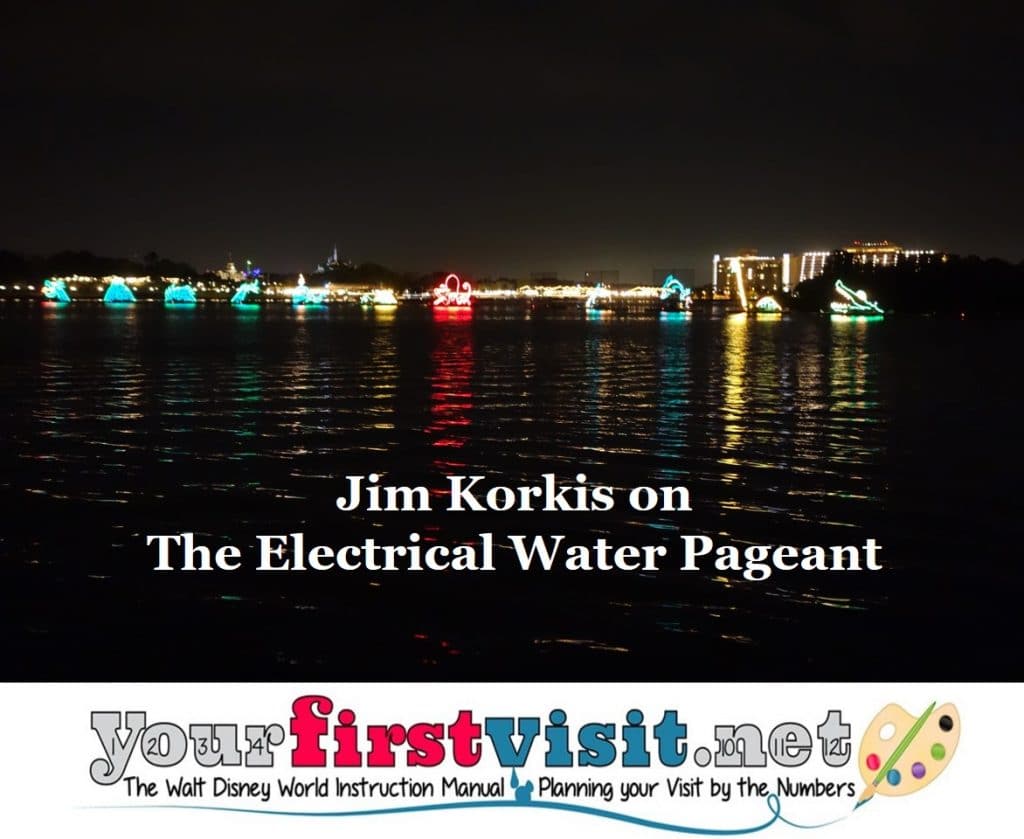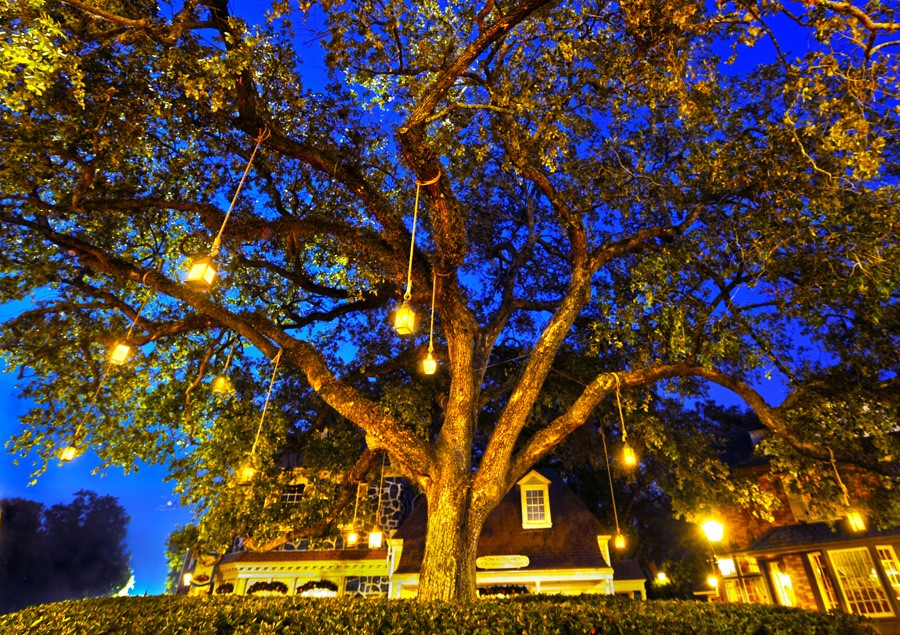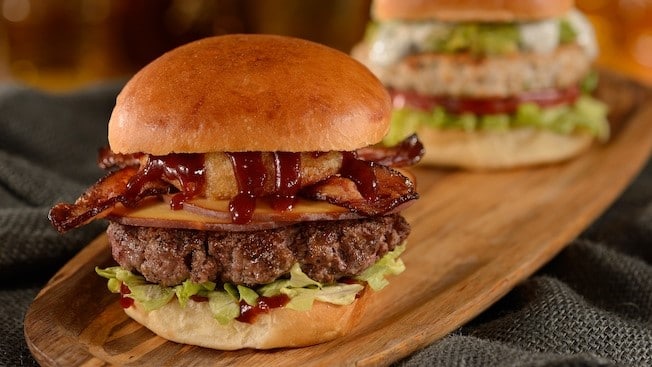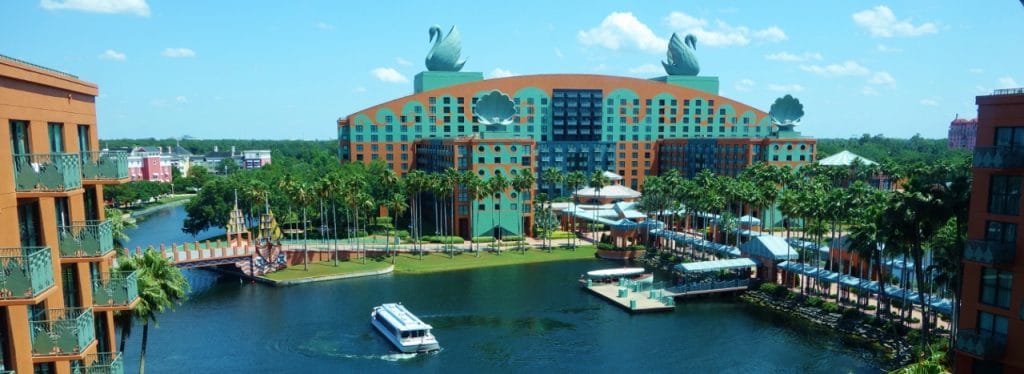Category — A Friday Visit with Jim Korkis
A Friday Visit with Jim Korkis: The Liberty Tree
Welcome back to Fridays with Jim Korkis! Jim, the dean of Disney historians and author of Jim’s Gems in The easy Guide, writes about Walt Disney World history every Friday on yourfirstvisit.net.
THE LIBERTY TREE IN MAGIC KINGDOM
By Jim Korkis
The Liberty Tree was an iconic symbol of the American Revolution. Walt Disney included a version of it in his live action feature film Johnny Tremain (1957) and intended to have a living representation in his proposed but never-built Liberty Street in Disneyland.
Instead, it is in Magic Kingdom’s Liberty Square. The tree in Liberty Square displays thirteen lanterns commemorating the thirteen original colonies. It is the largest tree ever transplanted on Walt Disney World property.
The preparation to move the live oak from the east side of the property to the Magic Kingdom, a distance of eight miles, took almost a year of planning. The tree was forty feet tall, sixty feet wide and weighted thirty-eight tons. The root ball measured eighteen feet by sixteen feet by four feet deep.
It was too large and heavy to tie a chain around the trunk and lift it as was common because that would have caused massive damage to the bark and sensitive cambrium layers and potentially kill the tree.
In 1985, I did an interview with Director of Landscape Design Bill Evans who said, “Necessity is the mother of invention. We occasionally had to move trees and couldn’t use the accepted practice of putting a large box around the root system because sometimes the weight would have been more than we could have handled.
“We drilled through the hardwood center of the trunk and steel rods inserted to form a cross. North-South and East-West. These rods served as handles for hoisting and hauling the tree with a 100-ton crane to its present location. We went around with pruning shears to reduce the root system to something we could handle. By doing all this, we reduced the weight to about one-fifth.
“Local nurserymen and landscape people were absolutely horrified including the professional pathologist from the University of Florida who predicted the tree would die in two years if we bored a hole through it.
“When we planted it, we re-inserted the original wood plugs. Unfortunately, over time they became diseased and had to be removed and we filled the holes with concrete to stop any further spread of the disease. We also grafted a small live oak onto the tree to give it that fuller shape it has today.”
The tree began it journey June 11, 1970 but was so heavy that the trunk could only move slowly inches at a time much like the vehicles that haul rockets to a launch site. The tree was re-planted on March 6, 1971.
According to the sign at the side of the tree:
“The original Liberty Tree, a stately elm, was a rallying point for pre-revolutionary activities. The open space under its branches was called ‘Liberty Hall’ and a flag pole was erected through its branches with a hoisted flag the symbol for action.
“Countless inflammatory cartoons and verses were nailed to its trunk and many Tories hung in effigy from its branches. Perhaps its proudest moment was the repeal of the Stamp Act when innumerable lanterns blazed among its branches for all to see.”
On the bronze plaque located at the base of the tree are the following words:
“Under the boughs of the original Liberty Tree in Boston in 1765, Patriots, calling themselves ‘The Sons Of Liberty’, gathered to protest the imposition of the Stamp Act. In the years that followed, almost every American town had a Liberty Tree — A Living Symbol Of The American Freedom of Speech and Assembly.
“Our Liberty Tree is a Southern Live Oak, Quercus Virginiana, more than 100 years old.”
The tree is the proud parent of more than 500 young trees that started out as acorns harvested from it.
* * * * *
Thanks, Jim! And come back next Friday for more from Jim Korkis!
In the meantime, check out his books, including his latest, Secret Stories of Disneyland, his Secret Stories of Walt Disney World: Things You Never You Never Knew, which reprints much material first written for this site, and his contributions to The easy Guide to Your Walt Disney World Visit, all published by Theme Park Press.
Follow yourfirstvisit.net on Facebook or Twitter or Pinterest!!
June 16, 2017 No Comments
A Friday Visit with Jim Korkis: D-Luxe Burger
Welcome back to Fridays with Jim Korkis! Jim, the dean of Disney historians and author of Jim’s Gems in The easy Guide, writes about Walt Disney World history every Friday on yourfirstvisit.net.
D-LUXE BURGER IN DISNEY SPRINGS
By Jim Korkis
According to the back story for Disney Springs conceived by Imagineers, a Florida cattle rancher named Martin Sinclair and his wife Clara discovered the water source in 1850 and settled there. Martin became “The Cattle King of the Springs”.
The story of the Disney Springs craft burger restaurant D-Luxe Burger is recounted by artifacts decorating the interior of the restaurant, which supposedly served as the original ranch house for Sinclair’s Glowing Oak Ranch in Springs, Florida. On the outside is the covered front porch where the Sinclair family could easily see the springs just a few short steps from their door.
Florida has the longest history of cattle ranching of any state in the United States so this back story honors that legacy.
In a display case is an undated letter from Martin to his wife Clara:
“My Dearest Clara. After weeks spent exploring the wilds of Florida, I have found us a home! The first night I arrived here after a particularly hard rain, the light from my campfire was reflected in the droplets of water clinging to the leaves of the oak tree overhead.
”The leaves appeared to be dancing and the sight of it inspired me to name the place ‘Glowing Oak’. In a fortnight I will return to you in South Carolina and cannot wait to start our living here in this happy place. Your loving husband, Martin. P.S. My crude hand cannot do justice to the beauty of this place but I’ve included a small drawing.”
On the wall is a map of the cattle ranches in the state of Florida in 1865 including several fictitious Central Florida ones created by Imagineering like Reedy Creek Ranch, Buena Vista Ranch, Kissimmee River Ranch, Turkey Creek Ranch and, of course, Glowing Oak Ranch.
A posted vintage advertisement for “Ranch Hands Needed for the Glowing Oak Ranch” stated: “To tend the lands. Square meals and fair deals for all. Must be able to rope and ride. Opportunities for Advancement.”
It ended with the slogan “There’s a seat for everyone at our table!” which later became the slogan for the family restaurant. In the ranch house, the Sinclairs cooked meals for the ever growing number of ranch hands. The reputation for outstanding food sometimes resulted in them opening the house to hungry tourists and locals as well.
Sinclair shifted from just being a dealer in beef cattle after he attended the St. Louis World’s Fair. In a display is a postcard dated from June 11, 1904 to Clara Sinclair: “My Dearest Clara, Greetings to you from the World’s Fair! I am finding such wonderful things here. Among my most favorite discoveries is a kind of ground beef sandwich they call a ‘hamburger’. I dare say, the recipe seems quite easy to discern, so I promise to fashion one for you upon my return. Your loving husband, Martin.”
That inspiration resulted in the Glowing Oak Ranch evolving into a family restaurant. It held its first ever “Burger Day” on February 26, 1905 from noon to five pm. “It’s no minced steak. It’s hamburgers! Hit of the World’s Fair. It’s time for fun. Join us now for a burger on a bun…with plenty of plates and, chairs and outdoor space!” Glowing Oak Ranch became Glowing Oak Restaurant on July 24, 1921. The restaurant provided the refreshments for the Springs Grand Centennial Expo in 1950.
Officially, the “current owner, Martin Sinclair VI” re-branded the Glowing Oak Restaruant to D-Luxe Burger on May 15, 2016. While the ranch itself has been sold off and re-developed over the years, the oak tree that inspired the original still stands outside the front door to the restaurant.
* * * * *
Thanks, Jim! I’m a big fan of D-Luxe Burger. In our book, we note that “D-Luxe Burger serves up the best quick service hamburgers on property.”
Come back next Friday for more from Jim Korkis!
In the meantime, check out his books, including his latest, Secret Stories of Disneyland, his Secret Stories of Walt Disney World: Things You Never You Never Knew, which reprints much material first written for this site, and his contributions to The easy Guide to Your Walt Disney World Visit, all published by Theme Park Press.
Follow yourfirstvisit.net on Facebook or Twitter or Pinterest!!
June 9, 2017 No Comments
A Friday Visit with Jim Korkis: Miss Adventure Falls
Welcome back to Fridays with Jim Korkis! Jim, the dean of Disney historians and author of Jim’s Gems in The easy Guide, writes about Walt Disney World history every Friday on yourfirstvisit.net.
MISS ADVENTURE FALLS
By Jim Korkis
Miss Adventure Falls opened at the Disney World water park Typhoon Lagoon on March 12, 2017. Built on two acres near the pineapple fields of Crush’ n’ Gusher, the water rafting attraction was originally announced as “Miss Fortune Falls”. It was added to the water park to strengthen its competitiveness against Universal Orlando’s new Volcano Bay water attraction.
Its story is that fictitious Captain Mary Oceaneer, a treasure-hunting heroine who collects and protects deep sea antiquities, got stranded with her pet parrot at Typhoon Lagoon years ago by a rogue storm.
On “treasure” rafts, Disney guests journey up past Mary’s wrecked ship, the M.S. Salty IV, with a massive hole in the side hull revealing her talking pet parrot, an audio-animatronics figure who sings and talks at a telescope trying to keep track of the unique artifacts that have been scattered when the ship crashed.
From there, it becomes a white-water adventure with twists, turns and dips that also feature some of the treasures along the way that Mary and her parrot have gathered in their travels around the seven seas. With a ride time of two minutes, it is the lengthiest slide experience at any Disney water park.
Mary is part of a new ongoing storyline at the Disney theme parks centered around the members of S.E.A. (Society of Explorers and Adventurers) inspired by the affection for the former Adventurers Club that operated at Downtown Disney. She appears in a portrait of the S.E.A. members in the queue of Tokyo DisneySea’s Mystic Manor.
Other prominent members of that fabled group include Harrison Hightower III, Lord Henry Mystic, Barnabas T. Bullion, Dr. Albert Falls and founding member Jason Chandler.
Captain Mary Oceaneer is also the main character of the Oceaneer Labs on the Disney Cruise ships. Portraits of her and her parrot named Salty show them to be treasure hunters, oceanographers and deep-sea divers. In fact, her diving suit is on display.
Her back story is that she and her parrot found treasure on and below Castaway Cay and established the first Pirate Party onboard the ship. For the new water park attraction, the parrot has been named Duncan.
The same storm that transformed Typhoon Lagoon also beached her ship and left her stranded. The impact scattered her nautical treasures around the tropical paradise.
The entrance of the attraction is composed of items from the shipwreck, including a bird cage, a diving helmet, a vintage Adventurer’s magazine with a cover painting of a smiling Mary. That undated magazine is Under the Sea Quarterly: The Magazine by and for Divers. Special Edition. “Treasures from the Deep. Meet Mary Oceaneer Collector & Protector of Deep Sea Antiquities.”
The queue is filled with items including unopened crates of S.E.A. artifacts, crackers for the Captain’s parrot, as well as parrot-shaped footprints.
Also nearby is Mary’s diving bell with the S.E.A. motto, “Exploratio Continua”, and underneath Atlantean lettering first created for the Disney animated feature film Atlantis: The Lost Empire (2001).
“Burma Shave” style individual signs share the story: “Follow the adventures of Captain Mary Oceaneer aboard a family raft ride featuring rushing rapids, an enclosed slide flume and treasures around every twist and turn. Captain Mary and her parrot…Dove for treasure hoping to share it… As they were hauling their treasures to port… a typhoon hit and cut their trip short. Bon Voyage.”
A map is posted indicating where there are gold coins, pearls and gems, “shiney” objects, sandals and crackers along the shores of Blustery Bay and Leaning Palms.
On the bookshelves of the Skipper Canteen restaurant in Adventureland is a copy of the book Parrots as Pets by Mary Oceaneer.
* * * * *
Thanks, Jim! And come back next Friday for more from Jim Korkis!
In the meantime, check out his books, including his latest, Secret Stories of Disneyland, his Secret Stories of Walt Disney World: Things You Never You Never Knew, which reprints much material first written for this site, and his contributions to The easy Guide to Your Walt Disney World Visit, all published by Theme Park Press.
Follow yourfirstvisit.net on Facebook or Twitter or Pinterest!!
June 2, 2017 No Comments
A Friday Visit with Jim Korkis: The Electrical Water Pageant
Welcome back to Fridays with Jim Korkis! Jim, the dean of Disney historians and author of Jim’s Gems in The easy Guide, writes about Walt Disney World history every Friday on yourfirstvisit.net.
THE ELECTRICAL WATER PAGEANT
By Jim Korkis
The Electrical Water Pageant first premiered in the Seven Seas Lagoon in October 1971.
Weather permitting, it is performed every night. The pageant barges are stored in the canal behind the Production Center building at Magic Kingdom located behind Splash Mountain.

Each of the 14 barges features a twenty-five foot high, thirty-six foot long wire screen decorated with lights.
Five people are required to operate the fleet: two pilots, two co-pilots and one safety-boat operator. The job of the safety-boat operator is to handle any problems once the barges are underway as well as assisting in pushing the barges around corners since the turning radius is literally a quarter of a mile unassisted.
The crew reports to the Production Center at 8:30pm each night where they don headsets, radios and appropriate clothing in case of cold or foul weather. They head out to the barges roughly ten minutes later.
A pilot sits in a booth on the first barge and the co-pilot sits in a booth on the last barge of the string. Both are connected with the audio headsets. They untie the barges and take off to head for their first show at Disney’s Polynesian Village Resort at approximately nine o’clock.
The loop continues with shows roughly fifteen minutes apart at Disney’s Grand Floridian Resort & Spa, Disney’s Wilderness Lodge, Disney’s Fort Wilderness Resort and Campground, Disney’s Contemporary Resort and finally outside the entrance of the Magic Kingdom park.
The barges arrive just a few moments before each show primarily because of the wind. They can not simply sit in one spot because the screens act as sails so any wind can play havoc even though the pilots try to form a sort of rainbow arc. Basically, there are just platforms on pontoons so are more fragile than most guests suspect.
The show begins immediately everyone is in position. The first string will signal the second string by light, letting them know that the show is ready to go. The co-pilot on barge 14, the last barge on the second string, has master audio control.
He flips a switch and it pumps music through a transmitter from his string to the first string’s receiver so everything is in sync. The co-pilots on each string flip switches to activate the lights on each screen when he or she hears the music cues.
The Paul Beaver version of Gershon Kingsley & Jean Jeaque Perrey’s “Baroque Hoedown”, created specially for the Electrical Water Pageant, was used from 1971 until 1977. The very same soundtrack was later used by Disneyland’s original Main Street Electrical Parade from 1972 until 1974 when it was re-recorded and updated by Don Dorsey.
The Electrical Water Pageant that guests see today consists of much the same floats in the same formation dating back to 1977. The only difference is in 1996 a new musical score was created for both the opening and closing of the Electrical Water Pageant as well as each creature depicted in the pageant.
Going over the water bridge between Seven Seas Lagoon and Bay Lake is “like dragging a garden hose through your house without touching anything” said coordinator David Kaumeier who operated the show for three decades.
“We can hear guests hooting and clapping 100 yards away and we get a great satisfaction from that. We’re the only crew that does this type of work in the world.
* * * * *
Thanks, Jim! And come back next Friday for more from Jim Korkis!
In the meantime, check out his books, including his latest, Secret Stories of Disneyland, his Secret Stories of Walt Disney World: Things You Never You Never Knew, which reprints much material first written for this site, and his contributions to The easy Guide to Your Walt Disney World Visit, all published by Theme Park Press.
Follow yourfirstvisit.net on Facebook or Twitter or Pinterest!!
May 26, 2017 1 Comment
A Friday Visit with Jim Korkis: Western River Expedition
Welcome back to Fridays with Jim Korkis! Jim, the dean of Disney historians and author of Jim’s Gems in The easy Guide, writes about Walt Disney World history every Friday on yourfirstvisit.net.
WESTERN RIVER EXPEDITION AT MAGIC KINGDOM
By Jim Korkis
Western River Expedition was an attraction that would have been built in the area of Magic Kingdom that Splash Mountain and Big Thunder Mountain now occupy.
It was jokingly referred to by Imagineers as “Cowboys of the Caribbean” because of its superficial similarities to the format and layout of the Pirates of the Caribbean attraction at Disneyland.
“For some reason, it was thought that because of Florida’s close proximity to the Caribbean, a ride dealing with pirates wouldn’t be as popular in Walt Disney World as it was in Disneyland,” Imagineer Tony Baxter said.
In addition, the Imagineers wanted some attractions that were unique to Disney World and not just a duplication of Disneyland.
Thunder Mesa Mountain would have featured a variety of attractions in addition to Western River Expedition, including a runaway mine train ride, hiking trails, a canoe flume ride, a Pueblo Native American village and more.
To accommodate all of this, a four story show building would have been decorated to look like the orange mesas of the American desert and Monument Valley. The WDW railroad would have gone through the building to offer guests a glimpse.
Imagineer Marc Davis spent five years creating a humorous ten to twelve minute boat trip through a variety of Wild West scenes. It was based on a concept he had developed as early as 1963 about a Lewis and Clark River Expedition for the never built St. Louis indoor theme park Walt Disney was considering.
Guests would have entered through a cave tunnel into the mountain and boarded boats that took them up a waterfall and then onto the winding river. Scenes would have featured comic Native American figures (including a rain dance with disastrous results), stagecoach robbers (where even their horses wore bandana masks), prairie dogs, antelopes, buffaloes, singing cowboys, and can-can dancing saloon girls.
It would have contained over one hundred audio-animatronics figures. A buffalo and prairie dogs were actually built for the attraction and later incorporated into the ranch house scene in the Living with the Land attraction at Epcot.
Davis spent many long months working on the attraction and had the enthusiastic support of both Roy O. Disney and President of Imagineering Dick Irvine.
Detailed sketches were made and models were created. Imagineer Mitsou Natsume even built a detailed model of Thunder Mesa and the exterior of the Western River Shipping & Navigation Company that was displayed for many years in the pre-show area of The Walt Disney Story on Main Street USA.
At one point, color stylist Mary Blair, a good friend of Davis and his wife, was brought in to consult with the color choices including a Painted Desert backdrop. Composer Buddy Baker had the beginnings of a theme song that would repeat throughout the ride.
The attraction was publicized with concept art in the Magic Kingdom guidebooks for 1971 and 1972 since the project was supposed to open with the park, but because of time and budget factors was relegated to the planned Phase 2 that would be completed by 1975.
The project was eventually cancelled because of prohibitive costs (estimated at over a hundred and twenty million dollars at the time), the decrease in popularity in Western movies and TV shows, and other factors including guests demanding the Pirates of the Caribbean attraction.
Davis still believed strongly in the Western River Expedition and offered a scaled-down version (removing the potentially offensive stereotypically comic Native Americans) with just a boat ride to be placed side-by-side with Big Thunder Mountain that had borrowed his idea of a runaway mine train for Thunder Mesa. Davis’ official retirement in 1978 meant the loss of the attraction’s biggest advocate.
* * * * *
Thanks, Jim! And come back next Friday for more from Jim Korkis!
In the meantime, check out his books, including his latest, Secret Stories of Disneyland, his Secret Stories of Walt Disney World: Things You Never You Never Knew, which reprints much material first written for this site, and his contributions to The easy Guide to Your Walt Disney World Visit, all published by Theme Park Press.
Follow yourfirstvisit.net on Facebook or Twitter or Pinterest!!
May 19, 2017 No Comments
A Friday Visit with Jim Korkis: The Swans and Dolphins of the Swan and Dolphin
Welcome back to Fridays with Jim Korkis! Jim, the dean of Disney historians and author of Jim’s Gems in The easy Guide, writes about Walt Disney World history every Friday on yourfirstvisit.net.
THE SWANS AND DOLPHINS OF THE SWAN AND DOLPHIN
CEO Michael Eisner felt that the two legacies he would leave at Disney were an improvement in culinary offerings and the development of what he termed “entertainment architecture” that referred to telling stories architecturally in buildings on Disney property that were not in the theme parks.
Eisner brought in renowned architect Michael Graves to design the Team Disney corporate building in Burbank, California. Graves said when he was in meetings with Michael Eisner, Eisner told him: “Look, everyone here will have some design priorities for you, but I only have one priority. When I come in to work each morning and go up to my office, I’ll probably have very little to smile about. So do something that will make me smile when I arrive.”
When his first designs for the Team Disney building were rejected, Graves came up with the concept of having the Seven Dwarfs as caryatids. A caryatid is a sculpted figure serving as an architectural support, taking the place of a column or a pillar supporting horizontal bands. “Because Snow White and the Seven Dwarfs was truly the foundation of the Disney Studios and supported the growth of the company, just as the dwarfs are supporting the building,” claimed Graves.
Eisner was so pleased with the final result that he had Graves come up with designs for the Swan and Dolphin resorts.
Designed by Graves, the swan statues (like the dolphin statues) were created from steel, wood and fiberglass, and were believed to be the largest structures of their kind in the world at the time. Since there were no existing samples to work from, Disney artist Gary Graham, following Graves’ design, sculpted the swan models out of Styrofoam. These were then computer-photographed (photogrammetry) in a process that turns the shapes into a digitized database.
The photogrammetric information was then sent on to a shipbuilding company in Wisconsin. There it was put into a computer that automatically cut the wooden ribs to exact specifications and imprinted the ribs with numbers and location directions. The ribs were then delivered to the statue site, where they were fitted to a steel frame. Once assembled, a fiberglass covering was carefully brushed on and then covered with five layers of laminate. The swan statues were then sanded, painted and ultimately lifted into place in May 1989.
Completed, the swan statues, referred to as “heroic” statues, are each 47 feet high. And at a combined weight of 56,000 pounds, they required a multi-ton, 70-foot crane to lift them and place them atop the hotel. They were placed on specially constructed pedestals at either end of the hotel’s roof, which support and display them.
The dolphin statues are each 63 feet high. All the roof sculptures are hollow inside, except for the structural beaming, and they have internal staircases and trapdoors for maintenance purposes.
At the Walt Disney World Dolphin, the sculptures were three-dimensional where guests can’t touch them and two-dimensional, like in the indoor fountain, where they can be touched.
At the Walt Disney World Swan, it is reversed and the sculptures are generally three-dimensional where they can be touched by guests (like the interior fountain), but two-dimensional (like the monkeys and parrots in the trees) where they can’t be touched.
The dolphins in the fountain facing the Walt Disney World Swan were supposed to be three-dimensional, but Graves was told to space them out wider because they obstructed the view. Instead, Graves simply sliced the dolphins, making what he called “dolphin filets,” and keeping them exactly where they were but opening up the space. He also made the fountain smaller since the dolphins became two-dimensional and needed to be able to be touched.
* * * * *
Thanks, Jim!
Jim has written multiple articles on this site on the Swan and Dolphin and on Graves. Reviews–including the refurbed rooms–begin here. And come back next Friday for more from Jim Korkis!
In the meantime, check out his books, including his latest, Gremlin Trouble! The Cursed Roald Dahl Film Disney Never Made, Secret Stories of Walt Disney World: Things You Never You Never Knew, which reprints much material first written for this site, and his contributions to The easy Guide to Your Walt Disney World Visit, all published by Theme Park Press.
Follow yourfirstvisit.net on Facebook or Twitter or Pinterest!!
May 12, 2017 No Comments







